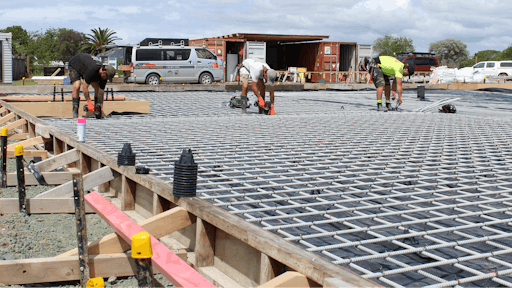Why Composites are Changing Building Products
Why Composites are Changing Building Products
Blog Article
Unlocking the Environmental Advantages of Recycled Compounds in Building and Style
In the world of building and construction and layout, the usage of recycled compounds holds considerable assurance for enhancing sustainability methods and decreasing environmental impact. The shift towards a more lasting future in these industries pivots on opening the complete potential of recycled compounds.

Ecological Effect Reduction
The decrease of environmental effect through making use of recycled composites in building and construction and layout plays an important function in lasting techniques. By including recycled compounds into building products, the building and construction market can considerably decrease its carbon footprint and add to a much more eco-friendly future. These sustainable materials, made from repurposed plastics, wood fibers, or various other recycled aspects, offer a sensible alternative to conventional construction materials without compromising on quality or sturdiness.
Recycled compounds help divert waste from garbage dumps and minimize the demand for extracting basic materials, hence preserving natural deposits. Furthermore, the production procedure of these composites often eats less energy and sends out less greenhouse gases contrasted to generating virgin materials (composites). This shift towards making use of recycled composites not just minimizes environmental damage yet also advertises a circular economic climate by motivating the reuse of materials that would otherwise be thrown out
Waste Reduction
With a concentrate on reducing waste in building and style, the assimilation of recycled composites supplies a sustainable option to reduce ecological effect. Waste minimization is an essential facet of lasting techniques, and using recycled compounds presents an opportunity to accomplish this objective efficiently. By utilizing materials that have actually currently served their preliminary objective, such as recycled plastics or recovered timber fibers, the building and layout markets can substantially decrease the amount of waste generated and sent to garbage dumps.
Recycled composites have the potential to divert considerable quantities of waste from standard disposal approaches, adding to a much more round economic climate where resources are made use of effectively. Additionally, the manufacturing process of recycled composites typically eats less power and generates less emissions contrasted to virgin products, even more minimizing the ecological impact of construction and layout jobs.
Implementing waste minimization techniques through the unification of recycled composites not only aids in conserving natural sources however likewise advertises an extra sustainable approach to structure and designing for a greener future.
Energy Conservation
Incorporating recycled composites not just decreases waste in building and layout yet additionally plays an important function in enhancing energy conservation practices within the sector. Using recycled compounds in building and construction can substantially add to energy conservation with different ways. To start with, the production of virgin materials generally needs considerable energy inputs, whereas making use of recycled compounds consumes less power, therefore lowering general energy consumption. In addition, including recycled compounds can add to far better insulation buildings in buildings, lowering the need for extreme heating or cooling, and consequently decreasing energy use for environment control. Additionally, the lightweight nature of lots of recycled composites can bring about lighter frameworks, requiring less power for transportation and setup. By promoting using recycled compounds in building and construction and layout, the industry can make significant strides towards achieving energy performance and reducing its carbon impact, inevitably adding to try this website a more lasting developed environment.
Carbon Footprint Decrease
Enhancing sustainability practices via the application of recycled composites in construction and design considerably minimizes the carbon impact of the sector. By integrating recycled products into the production of composites, the demand for virgin resources lowers, bring about reduced power intake and greenhouse gas emissions linked with standard manufacturing procedures. This reduction in carbon footprint is crucial in combating environment change and advertising a more eco-friendly approach to construction and design.
The carbon footprint decrease achieved via the adoption of recycled composites aligns with the international press in the direction of lasting methods and the decrease of industrial exhausts. Ultimately, by focusing on the combination of recycled compounds, the industry can make considerable strides in lowering its carbon footprint and adding to a more lasting future.
Sustainable Future
The integration of recycled compounds in construction and layout not just addresses instant environmental concerns however additionally lays a solid structure for a sustainable future in the sector. By integrating recycled composites right into structure materials and important link products, the building and construction and layout sectors can considerably lower their reliance on virgin resources, bring about a much more circular economy. This change towards sustainability is critical for mitigating the ecological effect of conventional building methods, which usually cause high degrees of waste generation and source depletion.

Conclusion
Finally, recycled compounds provide considerable ecological advantages in construction and design by lowering ecological influence, reducing waste, preserving energy, lowering carbon footprint, and advertising a lasting future. Embracing the usage of recycled composites can add to an extra environmentally-friendly approach to structure and layout, eventually resulting in a more sustainable and greener future for all.
The decrease of environmental influence via the usage of recycled compounds in building and layout plays a critical duty in sustainable practices.With an emphasis on lessening waste in building and construction and style, the combination of recycled compounds uses a lasting option to lower environmental influence. By promoting the use of recycled compounds in construction and layout, the market can make considerable strides towards attaining energy efficiency and reducing its carbon impact, ultimately adding to a much more sustainable built atmosphere.

Report this page